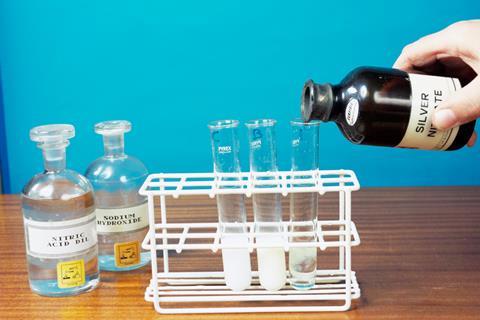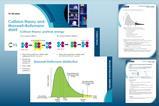Use these contexts and strategies to help your students continue their learning journey
All living things are made of organic compounds. This means every object derived from a plant or an animal is comprised of organic molecules. All our food (apart from salt and water) is made from complex mixtures of organic compounds, as are the objects in our homes that are derived from natural materials such as wood, paper, leather, wool and cotton. Today, many organic chemicals are also synthesised, and then manufactured into a diverse range of products including textiles, paints and dyes, plastics, medicines, fuels and solvents.
What students need to know
Organic compounds are categorised by their chemical properties, which are determined by the presence of particular atoms, bonds or groups of atoms, referred to as functional groups. For example, alcohols contain the OH group, aldehydes and ketones the C=O group, and amines the NH2 group.
Students need to:
- use general and empirical formulas;
- represent organic compounds using molecular, structural, displayed and skeletal formulas;
- be able to recognise, name and predict the existence of isomers within the homologous series they meet, including:
- structural isomers which have the same molecular formula, but their atoms are arranged in a different way;
- geometric isomers found in alkenes which have two different groups attached to each carbon of the C=C;
- optical isomers which are mirror images of each other and can rotate plane polarised light. A racemic mixture contains equal amounts of left and right-handed enantiomers of a chiral molecule.
Threshold concept
The functional group is the most chemically reactive part of an organic molecule and determines the similar chemical and physical properties of all the molecules in a homologous series. Without a good understanding of the different functional groups and their interactions, student progress in organic chemistry will be limited.
Common misconceptions
Students often think that structures are isomers when in fact they are not. This is because they forget about the free rotation that occurs around a single C-C bond or they don’t realise there are different ways of writing the same structure. Here, physical molecular models and animations are powerful tools for learning.
Optical isomerism can also cause confusion for students unfamiliar with what non-superimposable means. Again use molecular models and simulations to demonstrate this idea of left and right handedness.
The article Organic chemistry: smelly and difficult highlights some of the other difficulties students often encounter when studying organic chemistry.
Where students go wrong
Based on evidence from recent examiners’ reports, many students struggle to name or represent organic compounds correctly. Common mistakes include:
- failure to apply IUPAC rules for naming compounds;
- miscounting the number of carbon atoms on skeletal formulas;
- incorrectly drawing the functional group or stereoisomers;
- incorrectly placing the side chain when asked to draw the structure of a branched molecule;
- missing some isomers when asked to draw them all.
Other common mistakes include:
- being unable to balance chemical equations involving organic compounds;
- being unable to explain why E-Z isomers exist.
Ideas
Recognising functional groups and identifying the type of compound is something students should be able to do with sufficient practice, although to start with it can be rather daunting as the names appear arbitrary.
Providing students with hands-on activities will help them to understand the subtle differences between different organic molecules. You could use molecular models and card sorting activities, such as those in this lesson plan. It takes students through the rules for naming different hydrocarbons. By discussing the rules, students check and clarify their understanding. Using games and puzzles, such as Gridlocks, are another great way to help students to learn the different functional groups, use the different formula (molecular, structural and displayed) of a molecule and name different organic compounds.
Carrying out chemical tests to identify functional groups can be both memorable and challenging for students. The resource Practical videos: qualitative tests for organic functional groups includes videos of all the main functional group tests covered in most post-16 courses. Viewing these prior to the lesson will help students to become familiar with the method, while viewing after the lesson will help to consolidate their knowledge. The videos can also be used to support students as they learn to sequence tests to identify unknown organic chemicals.
The resource Gifted and talented chemistry - structure and bonding outlines a way to explore optical isomers through the extraction of limonene by steam distillation of orange peel and a homemade polarimeter. The next activity goes on to further explore other chiral molecules. Through a research activity students will learn about the chiral drug thalidomide. Thalidomide was prescribed to pregnant women suffering from morning sickness in the late 1950s and early 1960s, and it later transpired that one of the enantiomers caused severe birth defects. By researching this story, students learn about the importance of understanding optical isomers.
Assessment
Check students’ understanding using simple but challenging questions. Provide them with a mini-whiteboard, dry wipe pen and/or a molecular model kit; so that they can justify their answers.
Try these example questions:
1. What is the smallest alkane that has an optical isomer? (Heptane)
2. Explain why but-2-ene exhibits geometrical isomerism but but-1-ene does not? (Groups attached to the double bonds.)
3. Name an alcohol which has optical isomers. (Butan-2-ol)
4. Draw and name all isomers of C4H8.(There are six in total.)
The Starters for 10: advanced level 1 (16-18), organic chemistry resource provides some exercises for quizzing students on their organic chemistry knowledge.
Take-home points
- Use physical models and animations to support the learning and teaching of functional groups and isomerism. By engaging with hands-on modelling activities, students are more likely to understand and remember the differences in different molecular structures.
- There is a lot of content to learn, so provide students with plenty of opportunities to revisit functional groups in different contexts and regularly ask them to use the different types of formulas.
- Use examiners’ reports to inform formative assessment questions in your lessons. The four assessment questions provided above are examples of questions that address some of the points covered in the ‘Where students go wrong’ section.
This series will return to organic chemistry again, so keep an eye on the website and future issues

















No comments yet